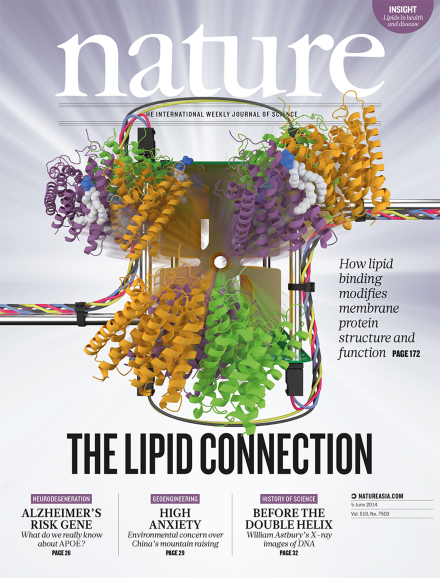Volume 510 Issue 7503, 5 June 2014
Editorial
World View
Research Highlights
Seven Days
News
Correction
News Feature
Comment
Books & Arts
Correspondence
Obituary
News & Views
Introduction
Review Article
-
Sphingolipid lysosomal storage disorders
Nature Outlook:

